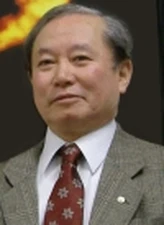Syun-Ichi Akasofu

The 2011 Hannes Alfvén Medal is awarded to Syun-Ichi Akasofu for his outstanding achievements in Solar-Terrestrial Physics, establishing the substorm as a fundamental concept of magnetospheric physics.
Syun-Ichi Akasofu received his PhD in 1961 and became professor of geophysics three years later. He has published more than 550 professional journal articles, and has authored/coauthored 10 books. In 1981 Syun-Ichi Akasofu was named one of the “1000 Most Cited Scientists”. In 2002 he was named one of the “World’s Most Cited Authors in Space Physics” by Current Contents ISI. He has in total received 16 awards and honours from various societies, universities and establishments, such as the AGU, the Royal Astronomy Society, and the Emperor of Japan. Syun-Ichi Akasofu’s auroral work has earned international recognition. His paper on the aurora published in 1964 was cited as one of the most quoted papers. With his first book “Polar and magnetospheric Substorm” in 1968, becoming a textbook for many graduate students, Syun-Ichi Akasofu established the notion of the substorm, now a fundamental concept of magnetospheric physics. The substorm, an explosive magnetosphere-ionosphere interaction leading to bright and lively auroral displays, is now seen as central to the dynamics of the coupling between the Earth’s magnetic field and the solar wind. Magnetic field-aligned currents mediate the interaction between the solar wind, the magnetosphere and the ionosphere, whose importance Hannes Alfvén did so much emphasize. By his achievement in establishing the substorm concept, and his other empirical contributions, Syun-Ichi Akasofu has in a substantial way helped lay the foundations for “understanding of plasma processes in the solar system and other cosmical plasma environments”, a requirement for a recipient of the Alfvén Medal.
